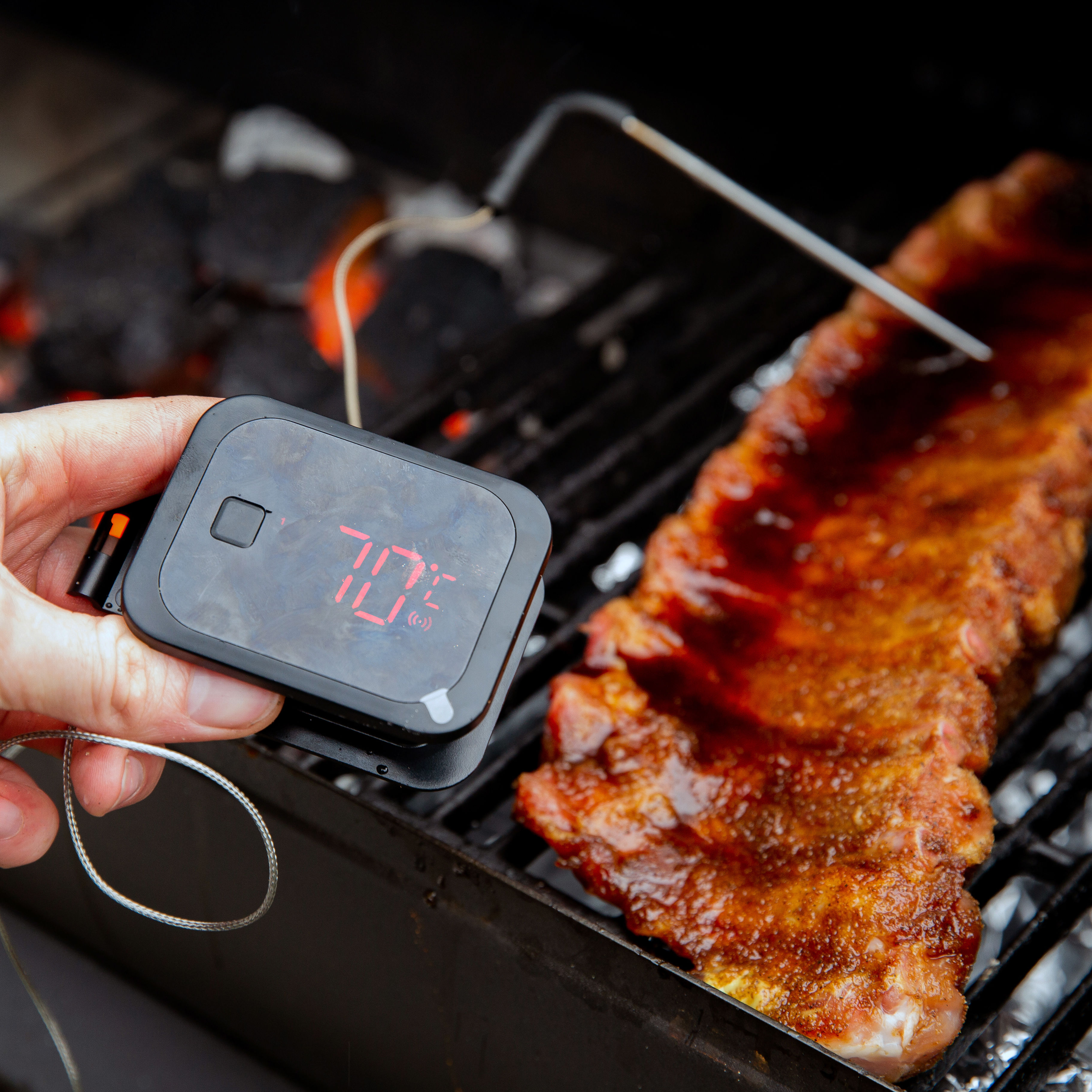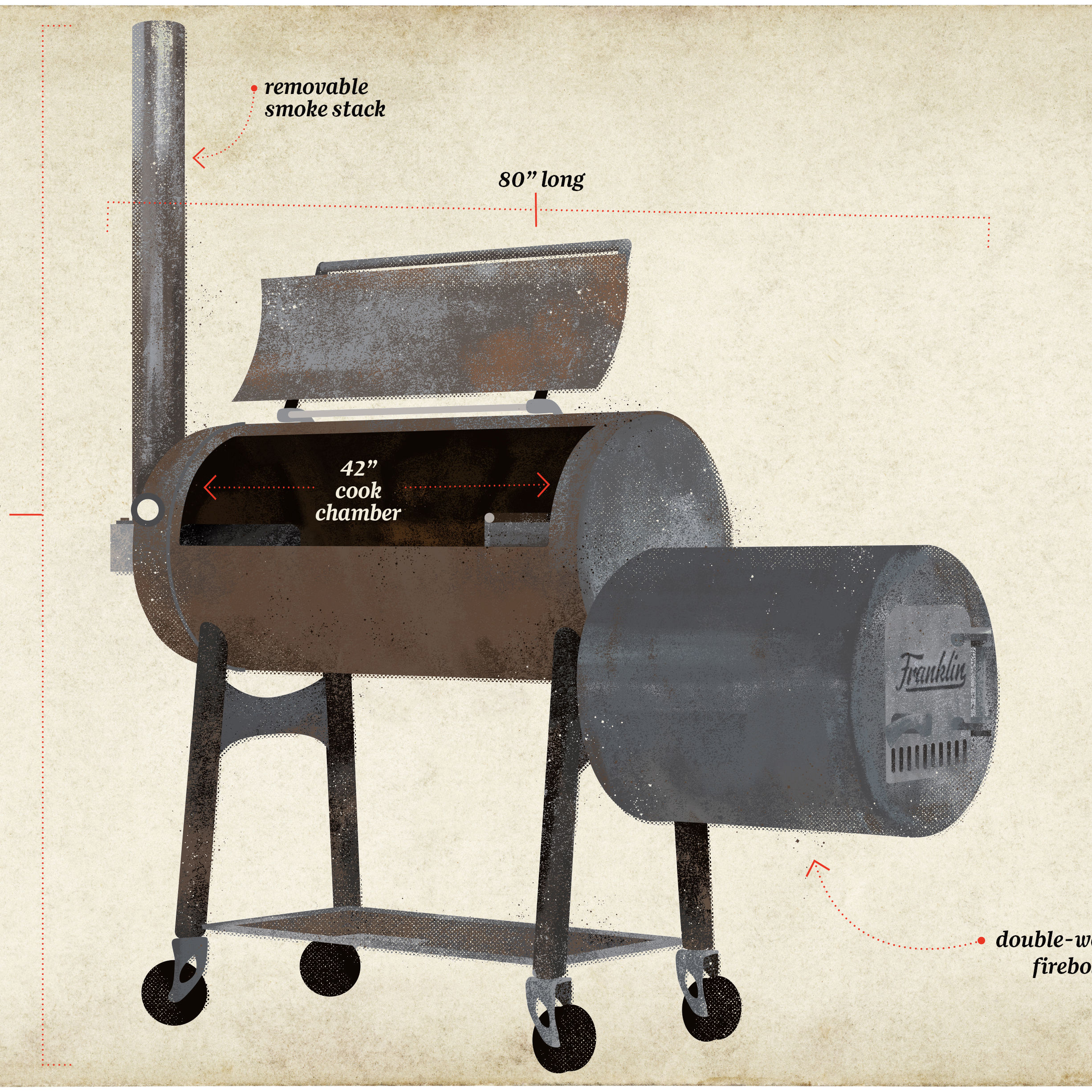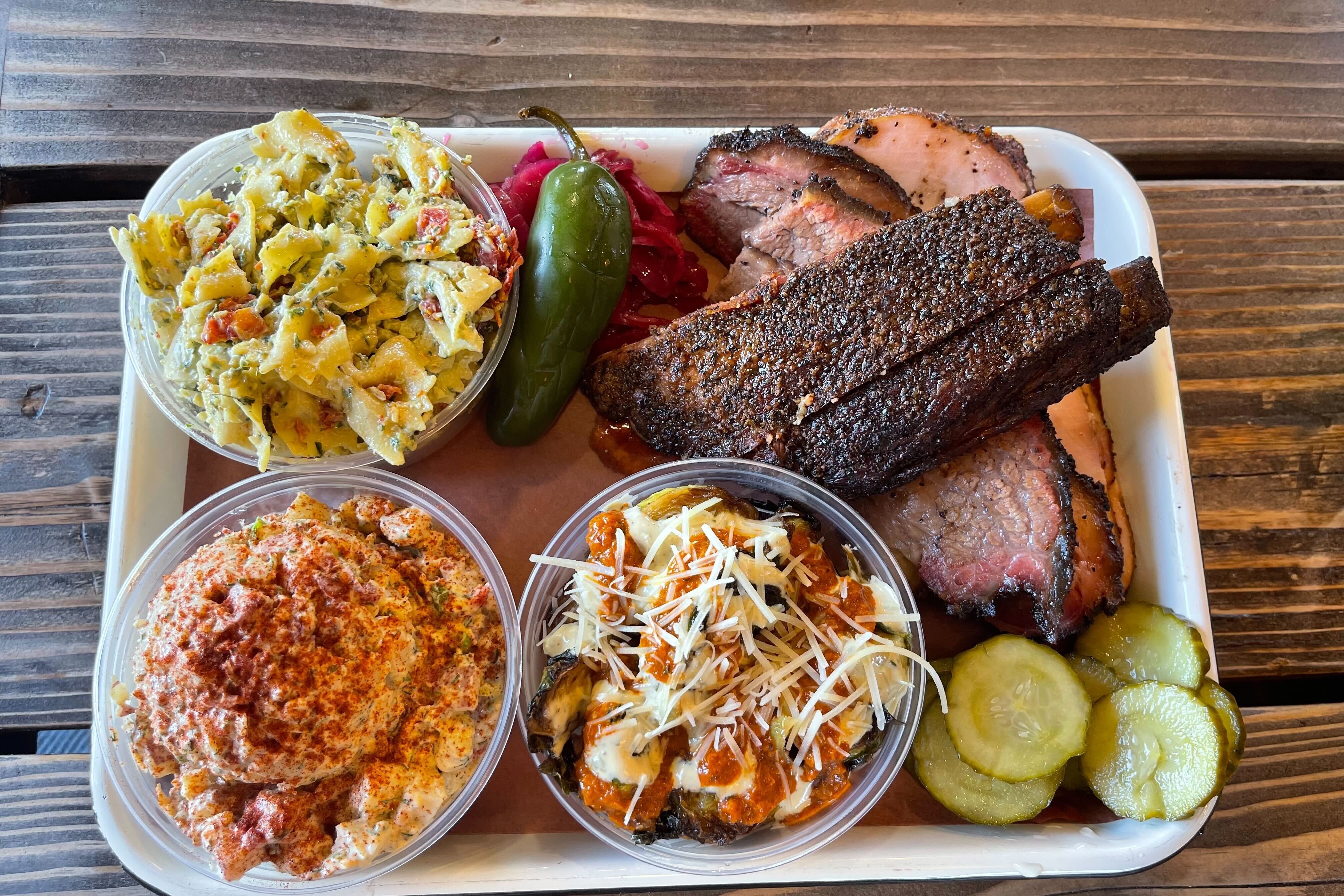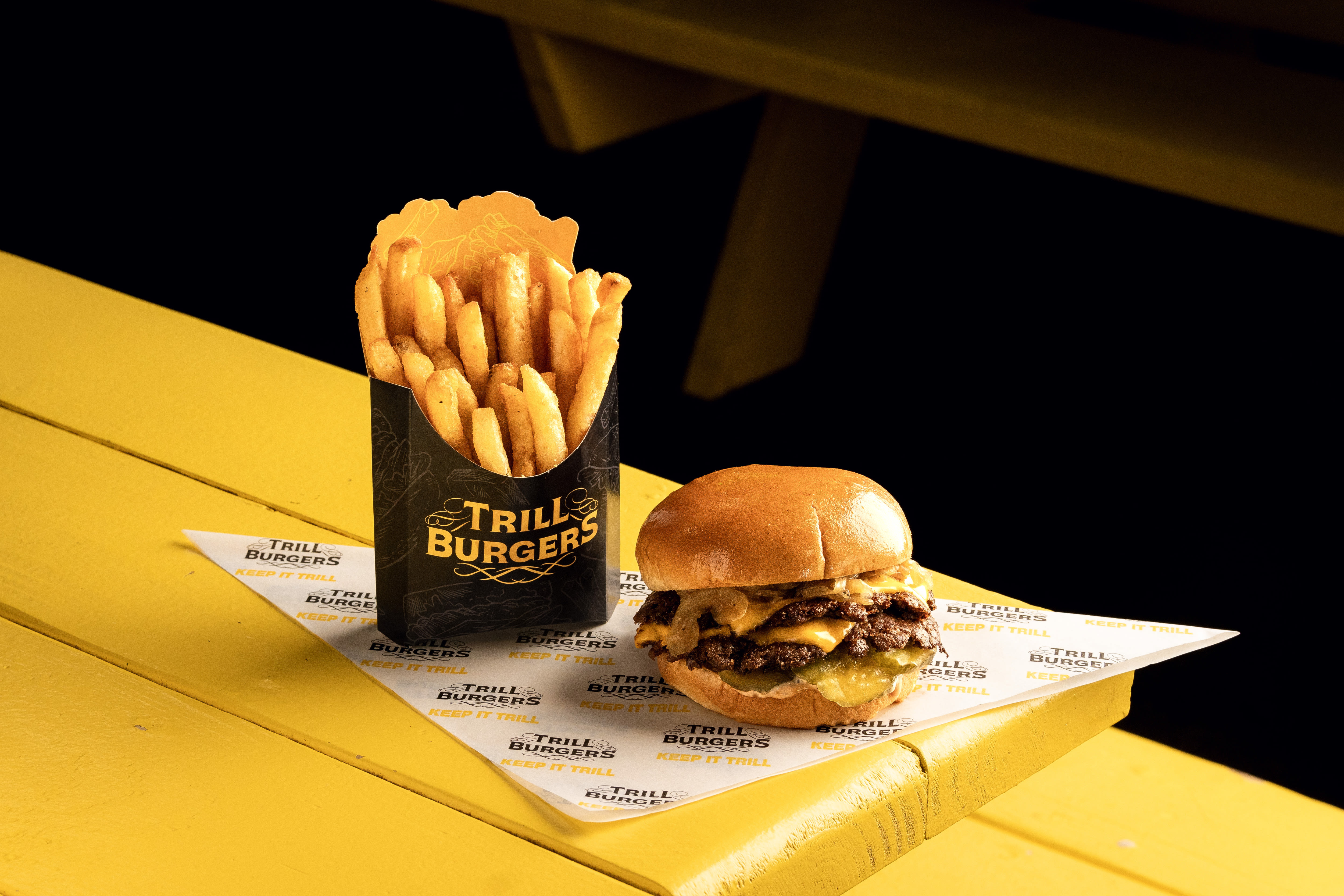A Beginner's Timeline to Smoking Brisket
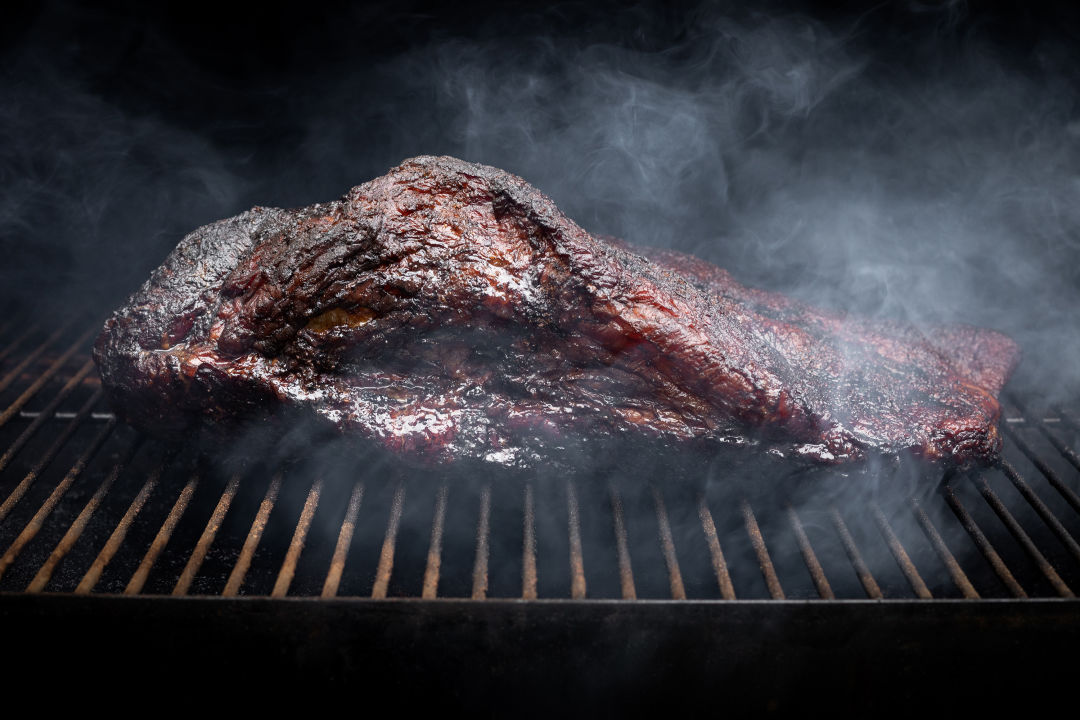
Don’t be intimidated!
Image: Shutterstock/VDB Photos
So, you’ve shelled out the $50 for a brisket from B&W Meat Company or some other local spot where people line up to get to that butcher counter, and you’re ready to take the plunge. Here now, Russell Roegels, of Roegels Barbecue Co., walks us through a smoking timeline for beginners. Think of this as a general guide for smoking brisket in your backyard and not as absolute gospel—no two briskets are alike. Also, we’re assuming you’re smoking about 12 pounds of brisket and using an offset smoker that requires wood for fuel, and you’re prepared for the dozen or so hours it’s going to take to smoke slow and low. Otherwise, carry on.
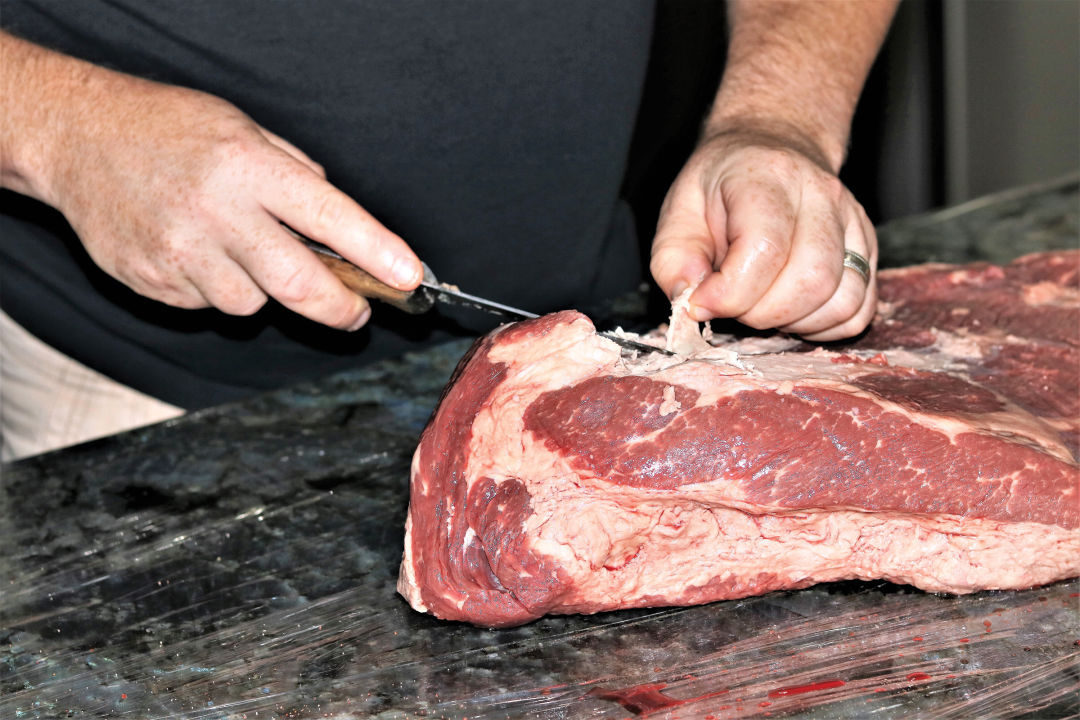
Trimming is a virtue.
Image: Shutterstock/Jody Ann
DAY 1
6 p.m.: Let the brisket rest at room temperature. Trim: remove excess fat on the fatty side, leaving as much as 1/4 inch of fat but keeping the side uniform, and cut down the deckle, or the fatty mass, by the point. Just don’t get rid of all the fat. You need that fat to add flavor to the meat. Then, rub it down with a spice blend: For most, nothing beats an equal mix of salt and black pepper.
8 p.m.: Get wood in the firebox—arrange the split logs like you’re weaving a basket, to maximize airflow. Use butcher paper or newspaper to start your fire. Remember: Every smoker is different, so keep notes and do trial runs to ensure you’ve got a handle on how to get the fire going in your vessel.
9 p.m.: An hour is usually enough time for a smoker to get to the right heat. Now, put your meat on. Start at about 225 degrees F. “When you cook brisket this slow, the proteins are gonna break down,” says Roegels, meaning juicier, more tender meat.
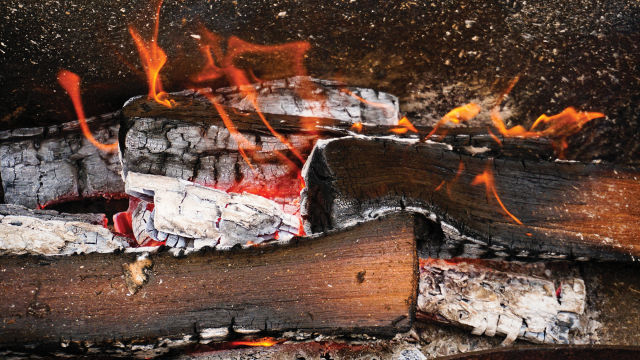
Begin with bigger logs.
10 p.m.: You’re an hour into smoking. How’s the fire burning? Early on, bigger logs are better as they burn slower and longer. That means more consistent smoke.
11 p.m.: You’re two hours in. Some pitmasters like to open the lid and spray their brisket with diluted apple cider vinegar (1/3 vinegar to 2/3 water) to keep it moist. Some don’t like it, though. “There’s a saying that if you’re looking, you ain’t cooking,” says Roegels, who is against the practice. If you want to try it, start now and repeat every 45 minutes until the meat is wrapped.
DAY 2
1 a.m.: Hope you have some music at the ready. Maybe you’re having a beer. Don’t overdo it! A single, simple pilsner is good.
3 a.m.: Time to wrap the meat, and then put it right back on. “It should have a good color on it,” says Roegels. “You’re going to want to wrap it in butcher paper, so long as it’s non-wax butcher paper.”
4 a.m.: Now it’s deep morning. You’re keeping one eye on the thermometer and another on the fire. Chill out, but don’t sleep.
8 a.m.: Yup, still going. Maybe crack that second beer. But start watching the internal temperature of the brisket. You’re looking for about 190 degrees F. “It depends on the brisket,” says Roegels, “depends on how hot you’re cooking.” For our purposes: 190.
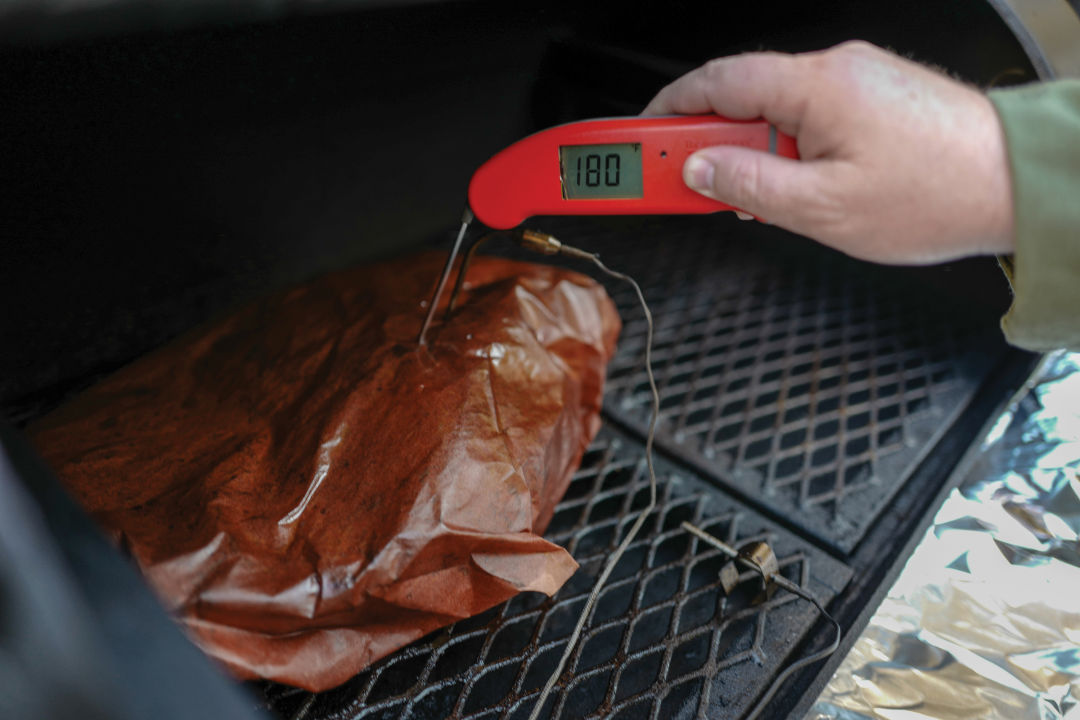
180? Not ready yet.
Image: Shutterstock/Nadzeya Photo
Noon: Finally! The brisket should be ready to come off by now. If you’re only at 180, take it off, keep it wrapped, and place it at room temperature. An empty cooler is a fine option, or even the kitchen counter.
4 p.m.: Finally—four hours later!—unwrap it and prepare to slice. Now, what you’re looking for is a brisket with an internal temperature of 145 degrees F, and it’ll take a few hours for that. Do not cut until that time, because once you cut, those fibers can’t absorb those juices anymore.
4:30 p.m.: Guess what? Nearly a full day after you start the process, it’s time to eat. The reward is tremendous.
